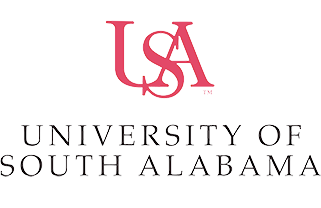
|
Policy No: 2027
Responsible Office: Safety & Environmental Compliance
Last Review Date: 02/10/2022
Next Required Review: 02/10/2027
|
Bunsen Burners and Other Heating Sources
1. Purpose
Personal injury or property damage can result from the use of Bunsen burners, ovens, hot plates, oil baths, salt baths, and other heating devices in the laboratory. These devices should not be left unattended, but routinely are discovered unattended when they must be closely monitored.
2. Applicability
These procedures shall be followed by Academic Affairs, Research & Economic Development, Medical Affairs and USA Health Division employees, or any other person who works with Bunsen burners, ovens, hot plates, oil baths, salt baths, and other heating devices in the laboratory.
3. Definitions
Bunsen burner: a gas burner consisting typically of a straight tube with small holes at the bottom where air enters and mixes with the gas to produce an intensely hot blue flame.
Hot plates: laboratory tools used to uniformly heat samples. Hot plates provide less heat but do so without the danger associated with the open flame and higher temperatures of a Bunsen burner. Hot plates often include digital displays of temperature, hot surface warning indicators and magnetic stirrers.
Oil baths: a type of heated bath used in a laboratory, most commonly used to heat up chemical reactions. It's essentially a container of oil that is heated by a hot plate or (in rare cases) a Bunsen burner.
Salt bath: a heat treatment process comprising an immersion of the treated part into a molten salt (or salts mixture). Benefits of heat treatment in salt baths include (i) fast heating, (ii) controlled cooling conditions during quenching, and (iii) low surface oxidation and decarburization.
Drying ovens: devices used to remove moisture from objects without cooking them. They are used for a variety of purposes, from sterilizing laboratory equipment to dehydrating foodstuffs.
4. Policy Guidelines
4.1 General Safety Requirements and Controls
Burners, ovens, hot plates, oil & salt baths, and other heat-producing equipment must be located a safe distance from areas where temperature-sensitive materials and compressed gases are stored. Drying ovens should only be used for their intended purpose and not over-loaded. All equipment must have the grounded three-prong plug intact and in good condition without frayed wire casing. Do not use equipment with damaged cords and or protective covers. Know the flashpoint of all materials utilized within the work area when working with heat generating sources. When using hot oil or sand for heating, mount the unit in such a way that it will not overturn. Store the oil or sand for reuse in a covered secondary container that is properly labeled with the applicable SDS information.
4.2 Engineering Controls
Use non-mercury thermometers, thermocouples, or bimetallic temperature indicators whenever possible. Do not use sand or oil baths unless equipped with a temperature indicating device.
4.3 Personal Protective Equipment
Appropriate gloves, safety glasses and lab coats must be worn when handling chemicals, containers, apparatus, and heating equipment.
4.4 Unattended Operations
All unattended operations must have prior approval from the Principal Investigator, Lab Manager, or Lab Safety Officer. Provide for containment of materials in the event of spills or failures. Label all containers and process equipment with the name of the material in use with associated hazards. Standard lab signage posted on the entrance door to include contact name and numbers for the PI and or responsible person performing the experiment. Keep the laboratory lights on with the door properly secured.
4.5 Emergency Response Measures
Do not leave experiments unattended without prior approval, implementing proper precautions, and using proper engineering controls. Educate anyone accessing the laboratory area where the emergency gas shut off is located when utilizing Bunsen burners. Know where the nearest fire alarm pull station and fire extinguisher are located. Know where the nearest eyewash unit/emergency shower is located and verify weekly checks have been performed. Ensure the laboratory area has spill kits equipped for the materials in use.
5. Procedures
Not Applicable.
6. Enforcement
This policy is enforced by the Safety & Environmental Compliance Department. Non-compliance may result in the suspension of associated activities and/or projects. University faculty and staff will be subject to disciplinary action per Faculty Handbook or Staff Employee Handbook, respectively.
7. Related Documents
Not Applicable.
